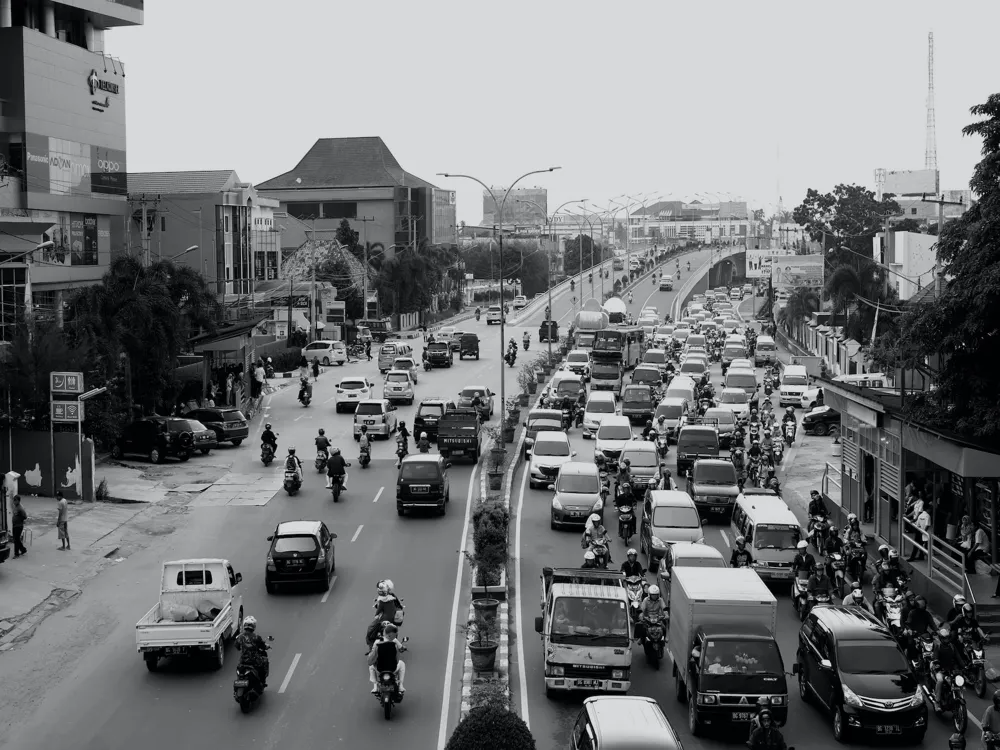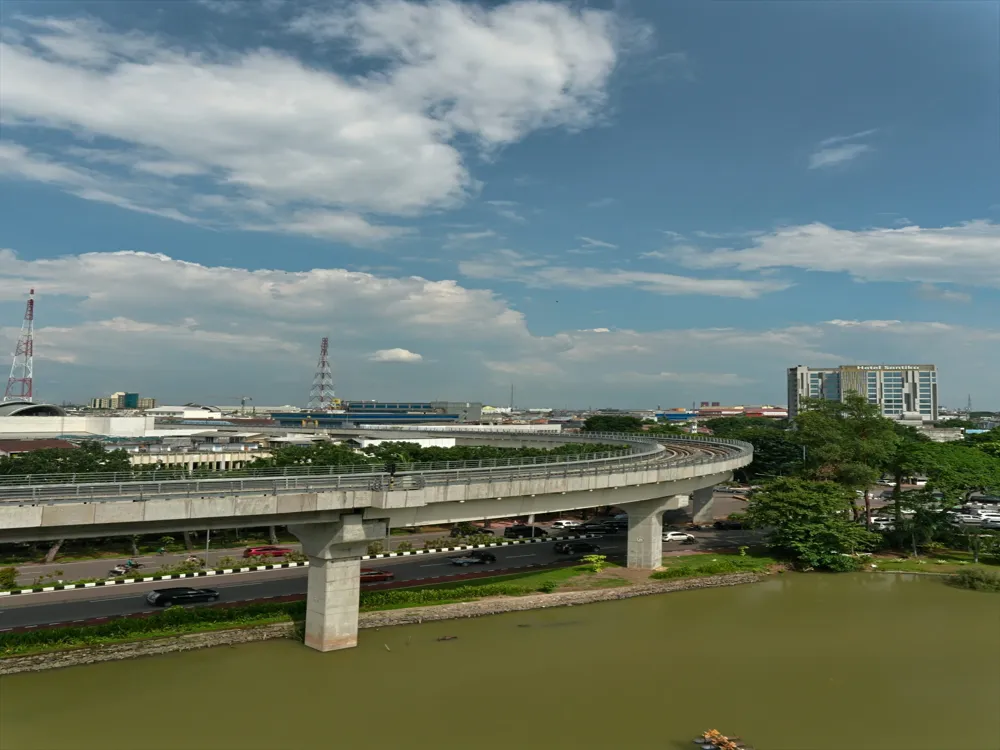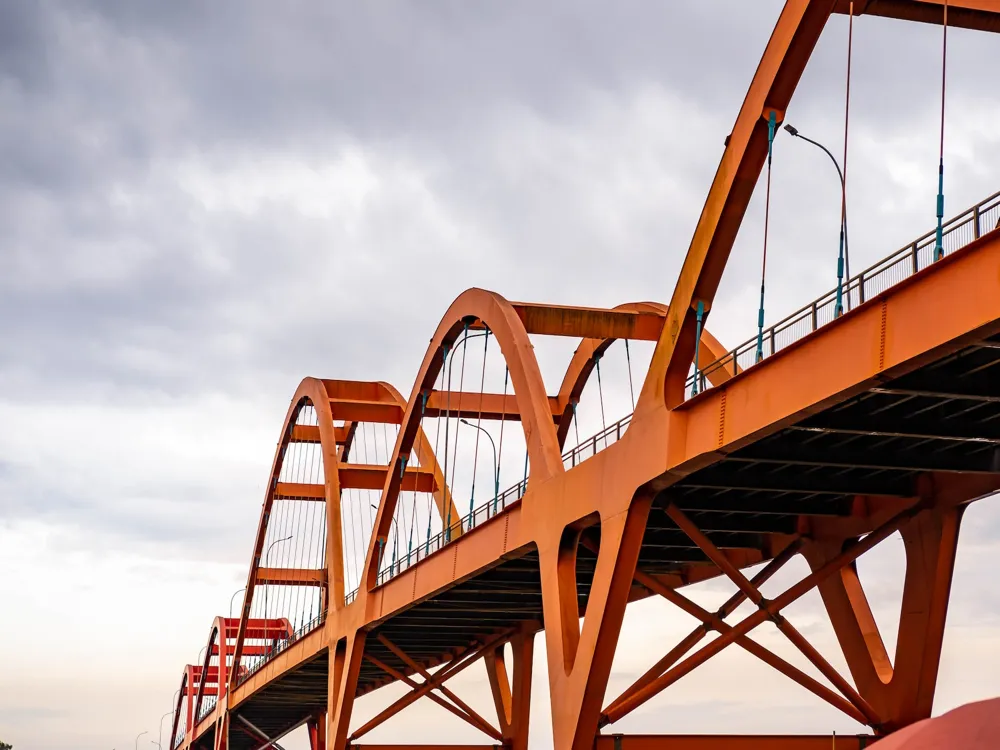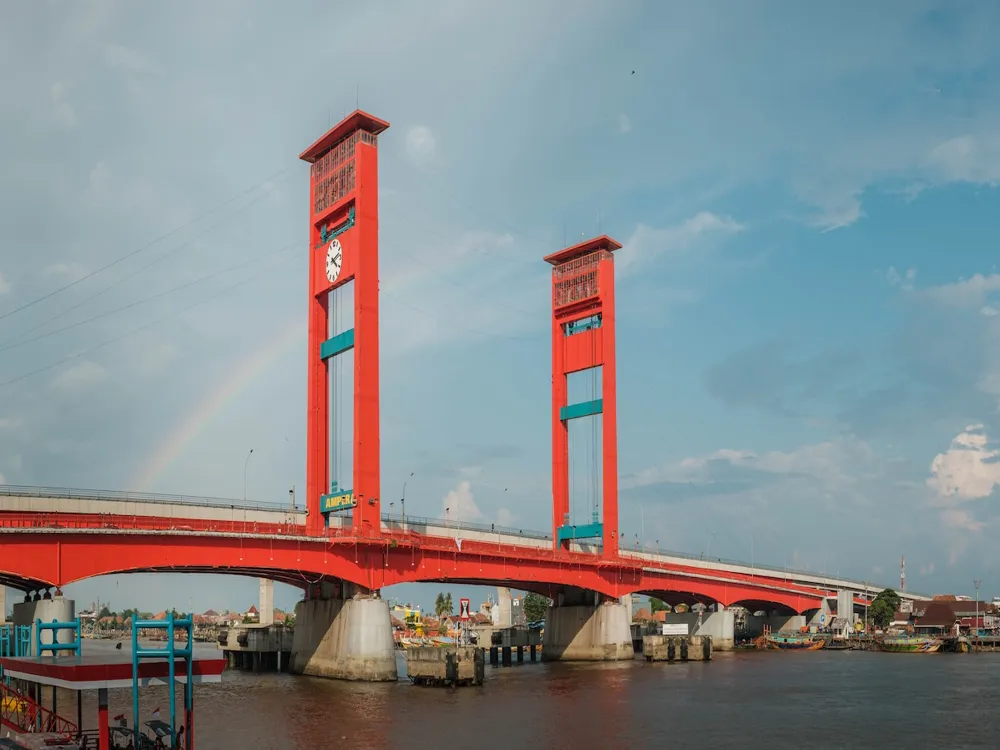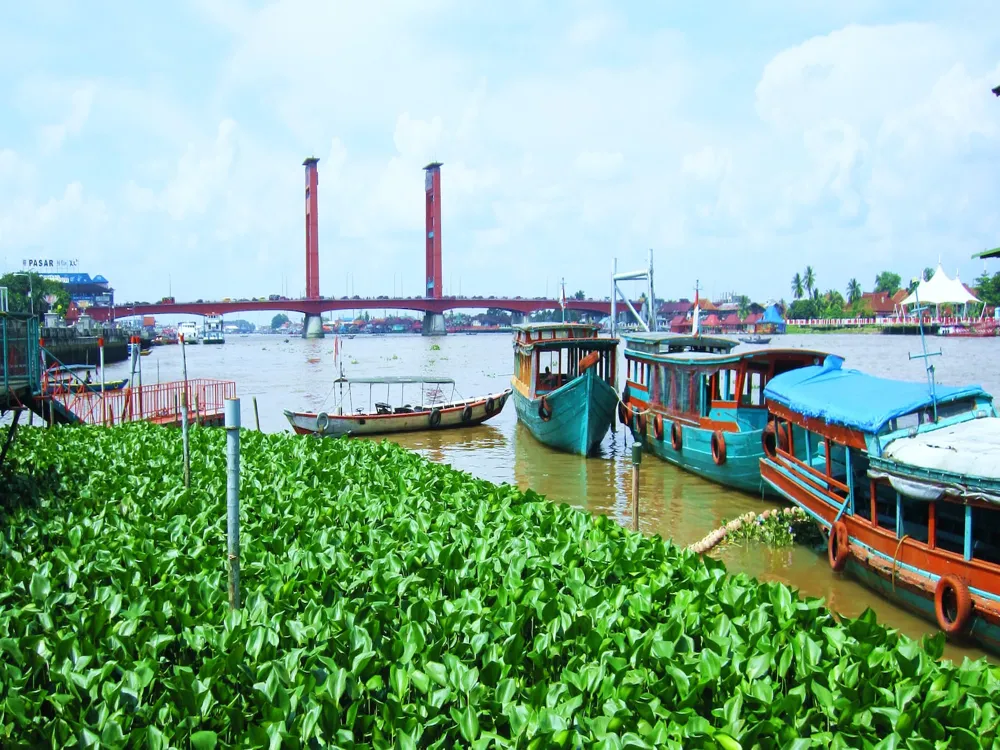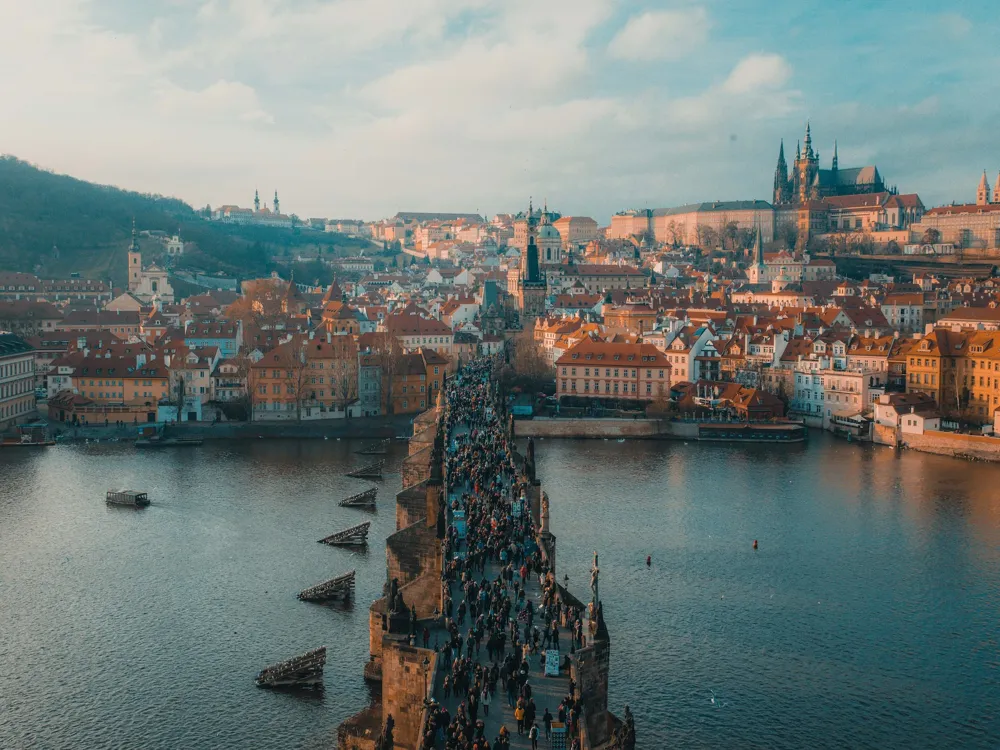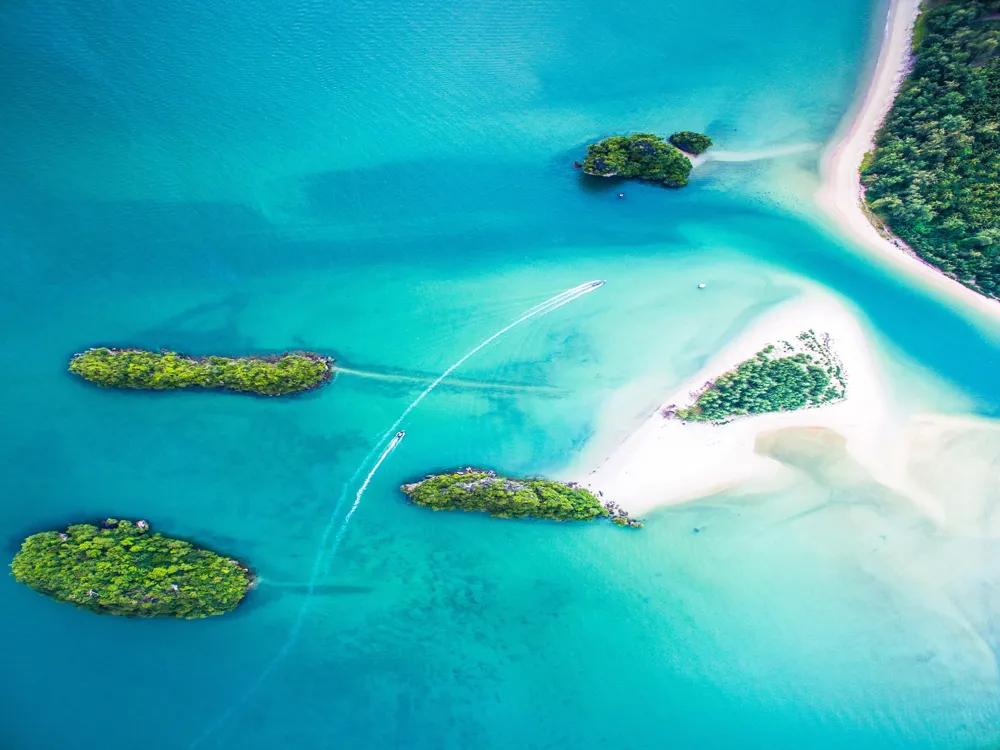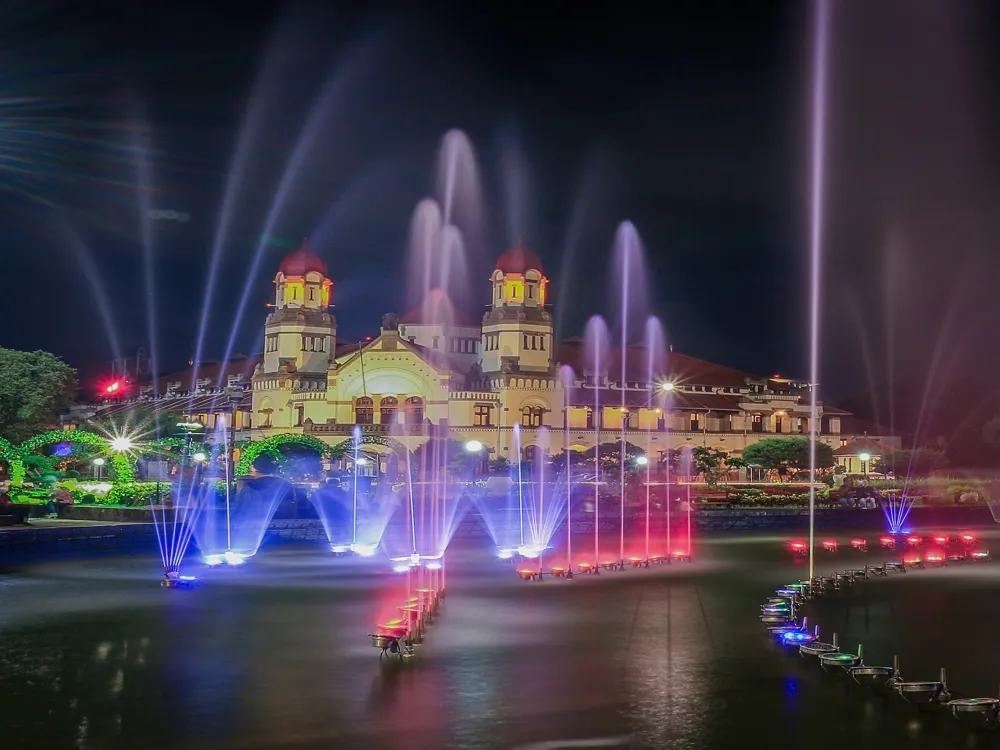Plan Your Travel To Palembang
Places To Visit In Palembang
Al Qur'an Al Akbar
The Al Qur’an Al Akbar, also known as the Al Quran Giant is known to be the largest wood carving of the Quran in the world and is located in the Palembang city of South Sumatra. Since it was established in 2011, it is still gaining popularity amongst the international tourists and is rarely ever crowded. The structure is made on tembusu wood sheets and has around thirty verses from the Quran carved out on these sheets. Around 40 cubic meters of wood was used in the building of the Al Qur’an Al Akbar and an expenditure of around two billion IDR was made on the same.
Each page of the carved scriptures is around 177 x 140 x 2.5 centimetres and the thickness of the same, along with its cover, reaches about nine meters. The Al Qur’an Al Akbar has a total of around 630 pages and includes tajweed and khataman verses for beginners, with all of these carved out on brown wood with the Arabic alphabet highlighted in golden yellow and flowers surrounding its edges in the typical Palembang style. It took around seven years to build this magnificent beauty.
Read More
Ampera Bridge
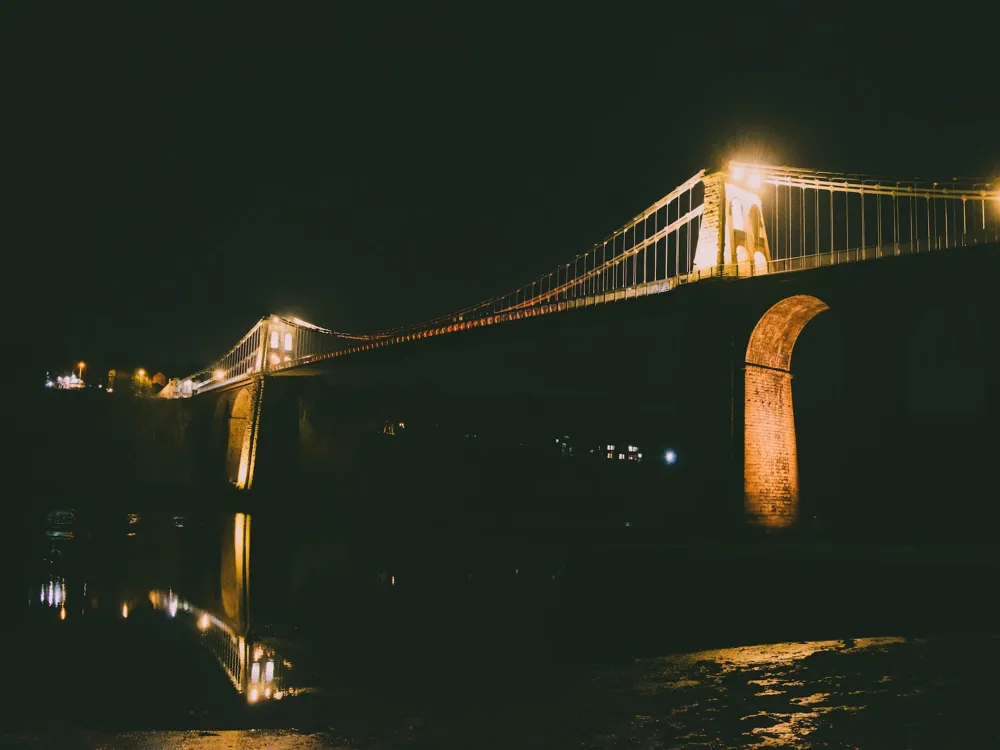
The Ampera Bridge is a vertical lift bridge in Palembang that connects Seberang Ulu and Seberang Ilir which lie separated by the Musi River. The bridge stands with a length of 224 meters and a span of 61 meters with a 9-meter clearance beneath it. The bridge was built in efforts to make something as grand as the Tower Bridge in London.
Ships can no longer pass from under the bridge as it was officially declared in 1970 that the bridge would not open anymore, a major reason for this being an inconvenient disruption of the traffic flowing from the two regions it connects because the mere operation of the bridge’s large wings would take about half an hour.
During the time the bridge could be opened, it would rise up at a speed of 10 meters per minute for ships of a maximum height of 44.5 meters to pass underneath the bridge. The bridge also had ballast weights in place to balance it, but they were removed in 1990 to prevent foreseeable accidents.
Apart from the disruption in traffic flow, the bridge was also made dysfunctional because of the dicey foundation of the bridge which was laid on soft mud, and as the years passed by the bridge got so deformed that it could no longer be opened, besides, large ships could no longer pass easily because of the silting of the river.
Read More
Benteng Kuto Besak
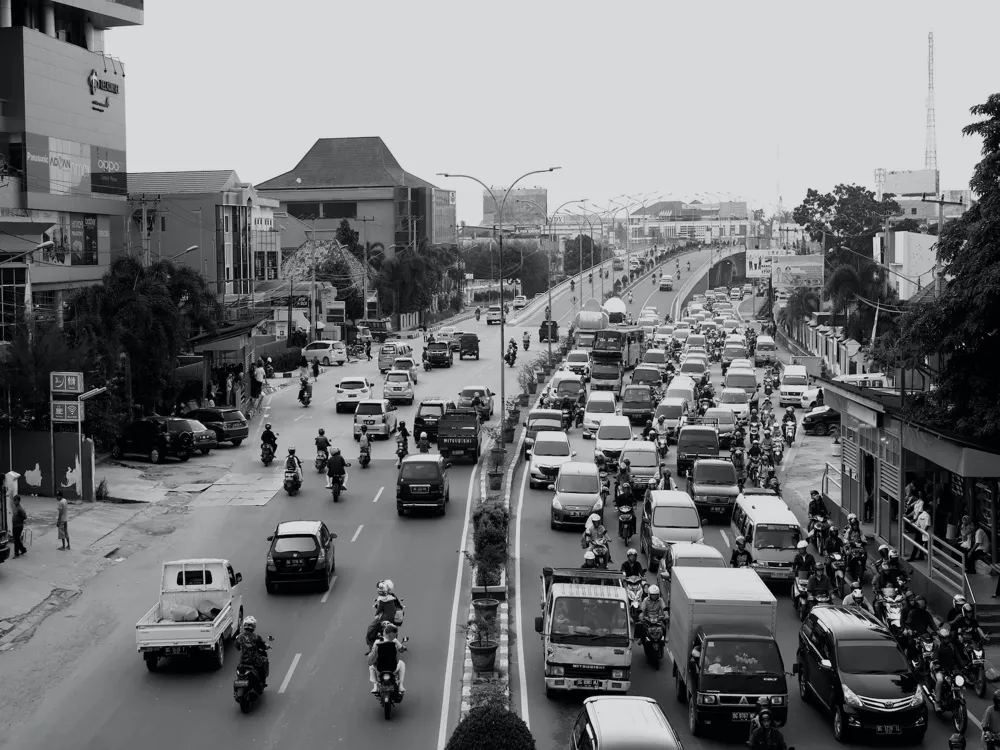
Overlooking the River Musi in Palembang, Indonesia is the 18th-century royal fortress Benteng Kuto Besak which was once the heart of the Sultanate of Palembang. It was a strategic construction built in 1780 and took almost seventeen years to complete. This ‘Kraton’ once served as a defensive design against the enemies of the Sultanate before it fell to the occupation of the Dutch colonials and is at present used as the headquarters of Sriwijaya Military District Command.
This fortress has now turned into a major tourist attraction with the polishing of the surrounding area here where the visitors can relax in the open space and enjoy the beautiful scenery of the Ampera Bridge by the River Musi at night. The fortress is however out of bounds for the public.
Read More
Bukit Siguntang Hill
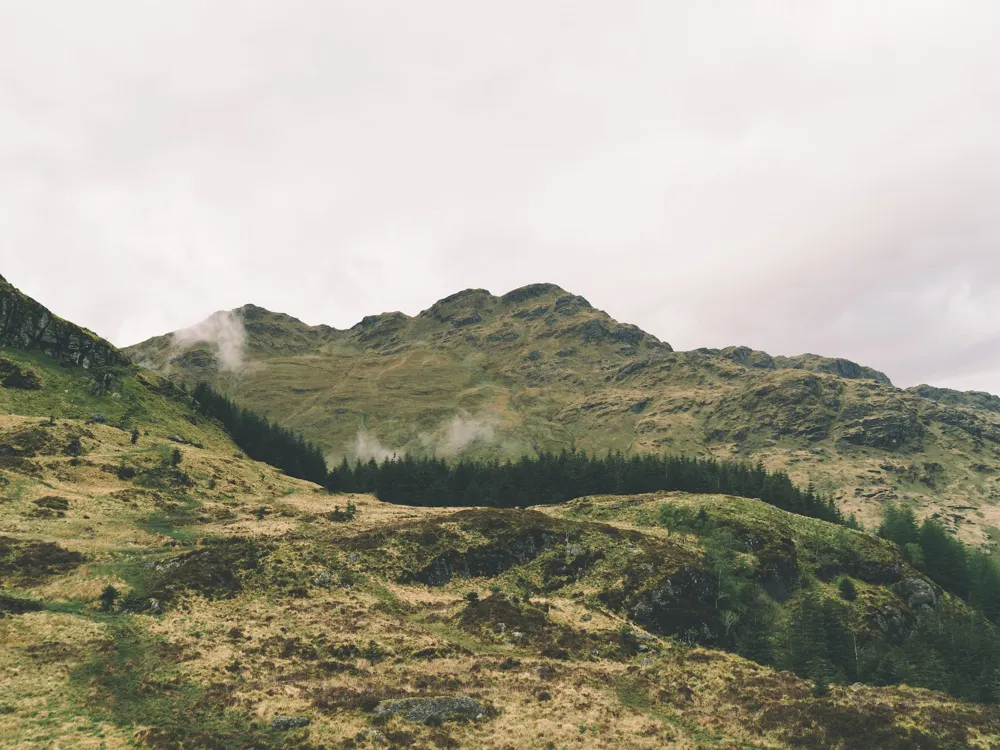
Bukit Seguntang is a small hill about 30m high and is located around 3 kilometres further from the northern bank of the Musi River. The region is home to a multitude of religious relics dating back to the Sriwijaya Empire of Palembang, and therefore is sacred to the locals. The hill is famous for the many Buddha statues that were unearthed on the hill.
It is considered to be part of the mountain Mahameru, referred to as the centre of cosmos in both Hindu and Buddhist pantheons. Several Buddha statues in his different manifestations have been excavated here and these excavations have been found along with an inscription describing a contemporary bloody battle. The complex with garden also houses several tombs of significant Malay-Srivijayan figures.
Read More
G Art Studio
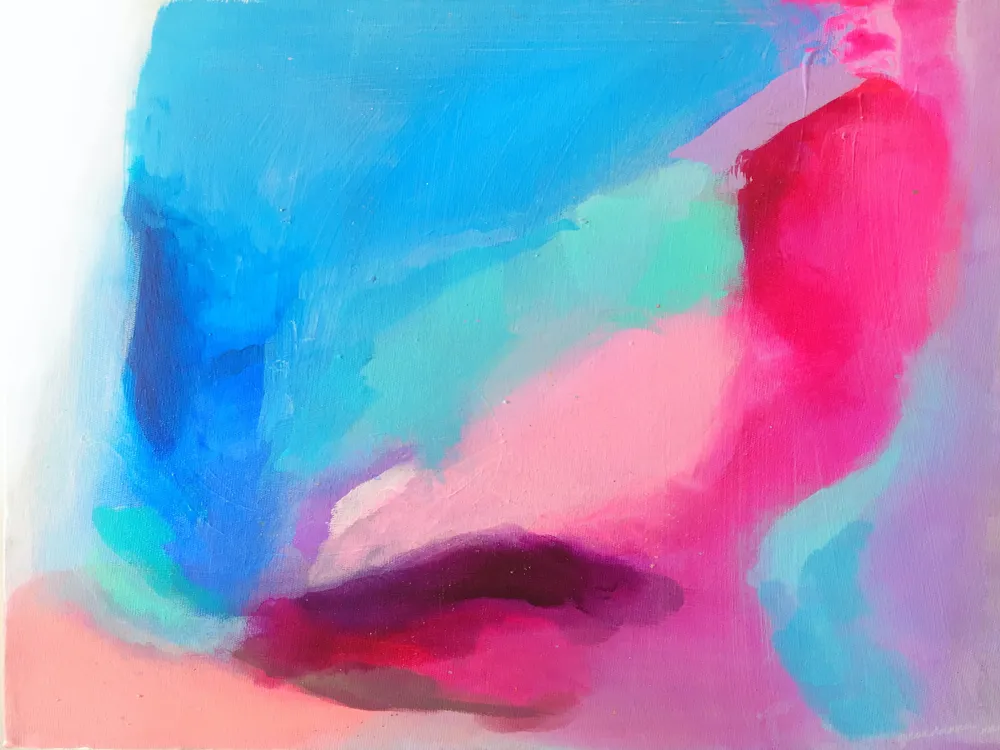
G Art Studio, located at Gramedia World in Palembang is a stunning gallery of beautiful, with exquisite, unique and quirky backgrounds, against which the visitors can portray themselves for pictures. There are pictures of charming sceneries, abstract images with 3D effects, scenes of the pages of history or landscapes of different attraction sites of Palembang. If you have missed out on any location, you could come here to strike a pose and take a memorable picture back home.
The G Art Studio is among the more offbeat destinations near Palembang but is wholly worth a visit if you have an artistic mind and some time to spare on a lazy afternoon. The ideal place to visit for that picture-perfect family postcard to send out during the holidays, G Art Studio caters to all your creative photography needs.
Read More
Kemaro Island
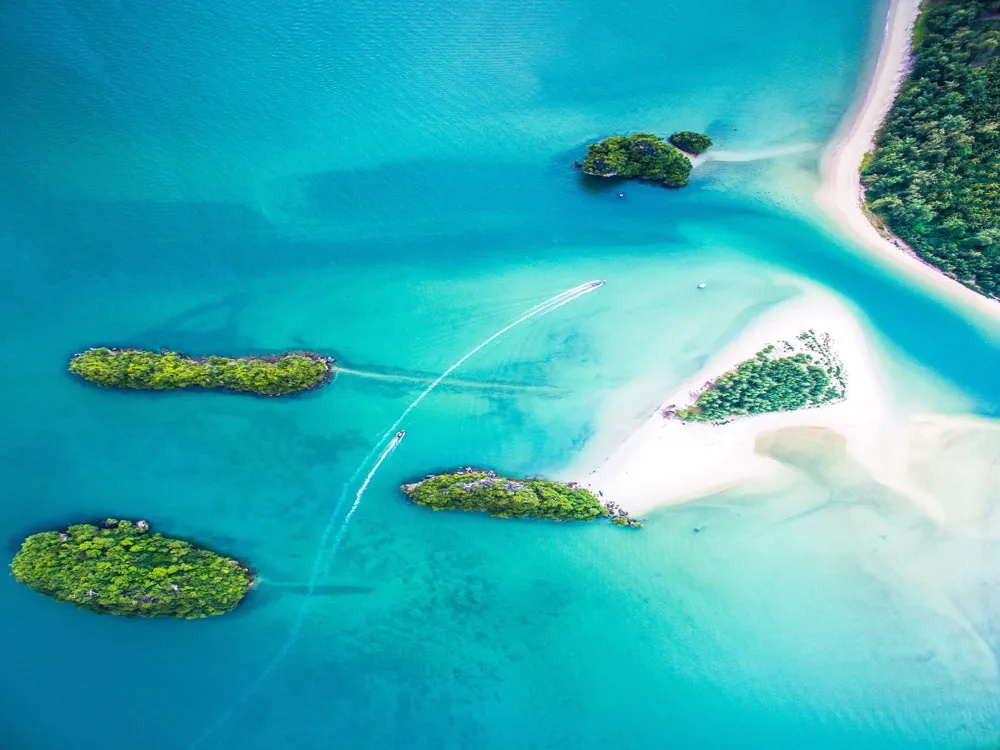
Located in a small delta of the Musi River about 6 kilometers downstream of the Ampera Bridge, Kemaro Island is a famous tourist attraction in South Sumatra because of the scenic beauty it has to offer along with the various temples and festivals that tourists and the frequenting locals can visit and enjoy. The island acts as a recreational site for many, as it is located 40 kilometers away from the hustle bustle of the main city of Palembang.
The island is also home to a Chinese Vihara, or Klenteng Hok Tjing Rio, which has nine stairs and is located in the middle of the Kemaro Island. The structure has a typical Chinese style of architecture and is known as the signature icon of the island. Tourists tend to flock the place during the time of major Chinese festivals like the Cap Go Meh or the Imlek New Year, and the venue also has other structures like a Buddha temple and the graveyard of Prince Tan Bun An from China and Princess Siti Fatimah of Sriwijaya.
Read More
Kuto Besak
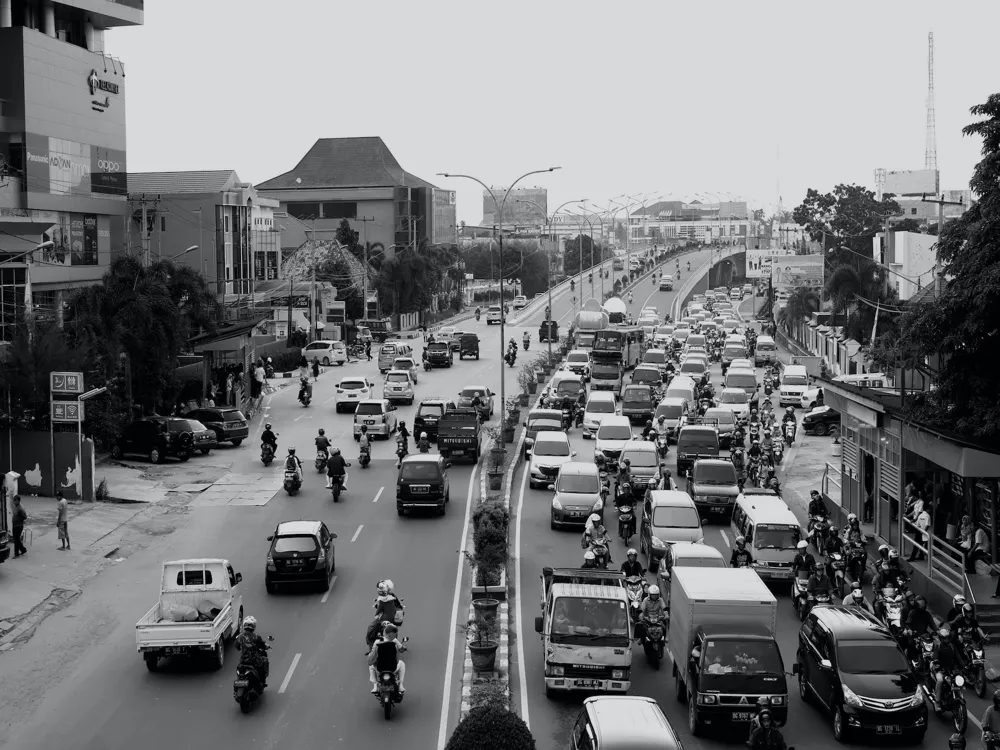
Currently the HQ of defence command Kodam II/Sriwijaya, Kuto Besak has initially been a fortified palace which acted as one of the four kratons of the Sultanate of Palembang, Kraton Kuto Gawang, Kraton Beringin Janggut and Kraton Kuto Batu/Kuto being its three predecessors.
Before the Dutch took over in 1821, it was a royal residence for years since its inauguration in 1797 by its patron ruler, Sultan Mahmud Bahauddin. As per the wish of his forefather, Mahmud Badaruddin he began the construction in 1780, Kuto Besak required a total of 17 years to finish, and it remained his residence till his exile by the Dutch to Ternate.
Read More
Masjid Agung Palembang
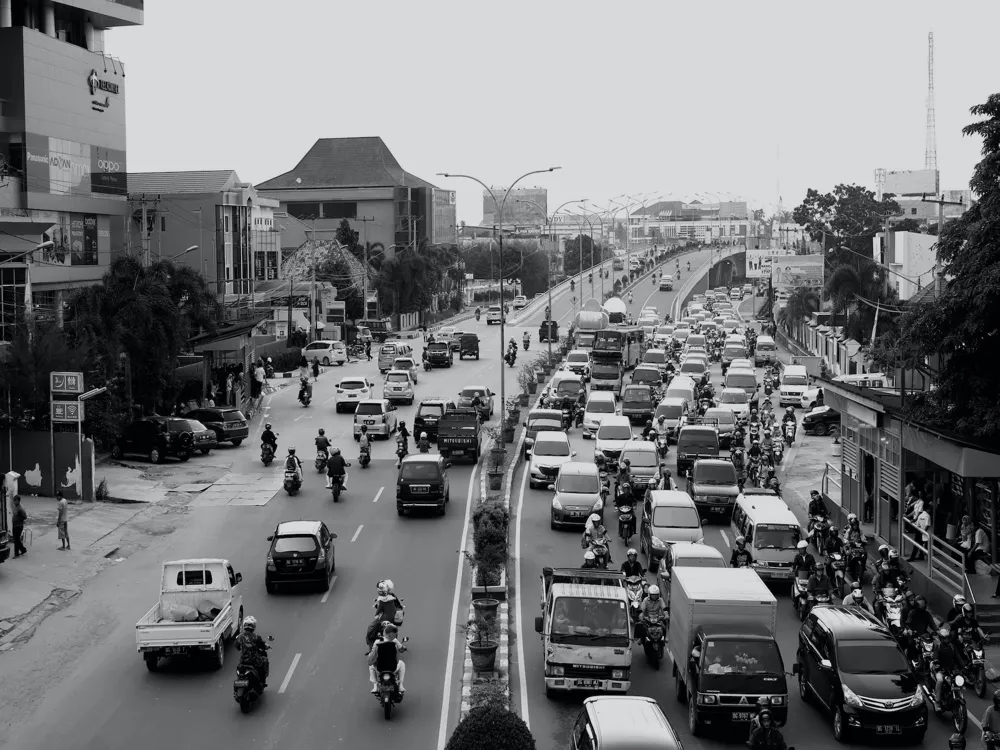
The Great Mosque of Palembang, also known as Masjid Agung Palembang, is the chief mosque of the city and also the largest one in the entire archipelago of South Sumatra. Established in 1748 by one of the most prominent rulers of the Sultanate of Palembang, Madmud Badaruddin I, the mosque has evolved exponentially over the course of its history. Therefore, it has assimilated in its architecture quite a multicultural vibe and makes for a great place to visit for the understanding of the dynamic cultural fabric of Indonesia’s past and present.
Read More
Masjid Cheng Ho
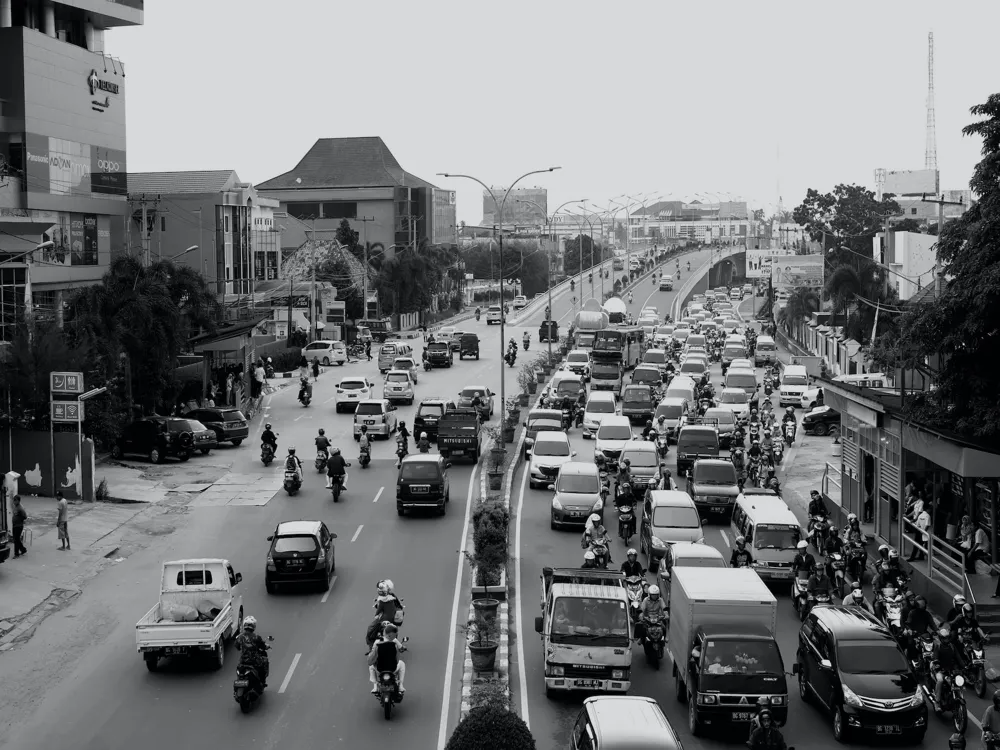
Masjid Cheng Ho is a contemporary mosque in Jakabaring Palembang, South Sumatra which caters to the local Muslim community and represents the congruous co-existence of the Arabic and Chinese cultures in the country. It was founded by the initiative of the senior members of the Chinese Islamic Association of Indonesia (Persatuan Islan Tionghoa Indonesia, PITI).
Its constructions began in 2003 and it was officially named Al Islam Muhammad Cheng Ho Sriwijaya Palembang Mosque when it was finally inaugurated in 2006. The elaborate moniker is in honour of an iconic Chinese merchant of the 15th century, Zheng He. As a traveller, if you want to take an offbeat route to explore the wonders of Palembang, Masjid Cheng Ho can be a good addition to the list. It has sincere blends of Chinese, Malay and Arabic styles of architecture, both in design and colour codes of the structure. Other than being the place of worship for the local Muslim community, it is also a centre of free education of Islamic learning.
Read More
Monpera
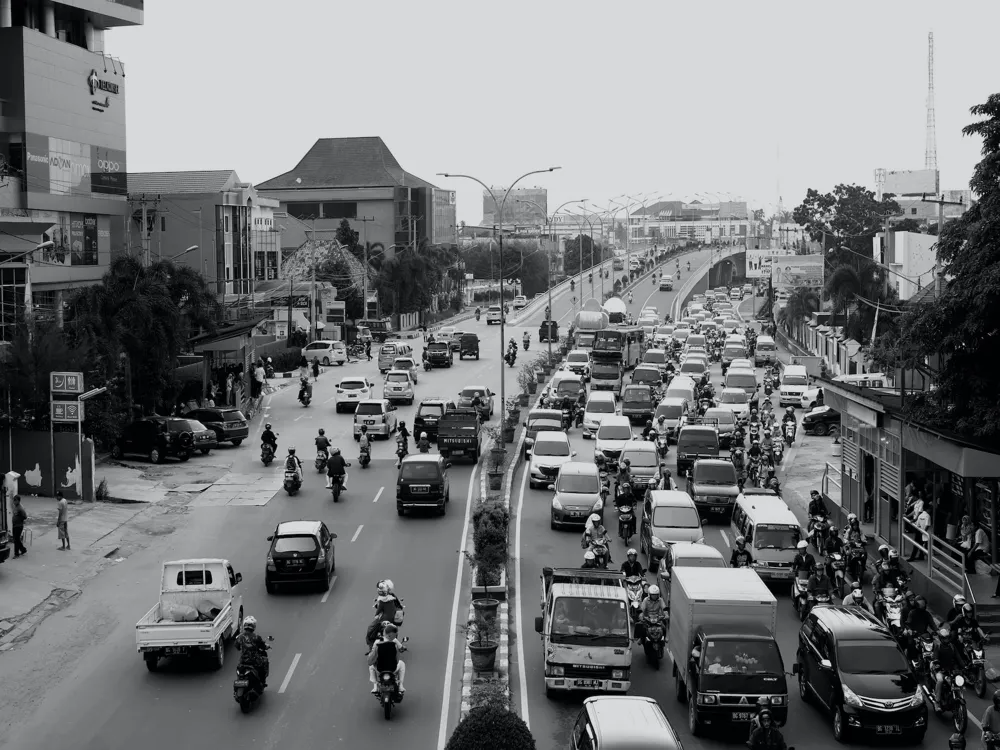
Monpera, or the Monument of People’s Struggle, is a famous tourist attraction in Sumatra Island because of its rich history and magnificent concrete structures. The heritage site was built in honour, and to memorialize the local rebellion against the Dutch colonialists and tells the story of the occurrences before and after the declaration of Indonesia’s independence that took place on the 17th of August, 1945.
The monument is known for its jasmine flower-shaped structure and the buildings surrounding it, like the main gate with six concrete forks and the large size of the building which stands at 17 meters with eight levels and 45 lanes. The seventh level of the building provides a stunning view of downtown Palembang, including the Grand Mosque of Palembang which is located in the same vicinity as that of Monpera.
Read More
Palembang Travel Packages
View All Travel Packages Palembang
Nearby Places Palembang
Browse Package Collections
Browse Hotel Collections










